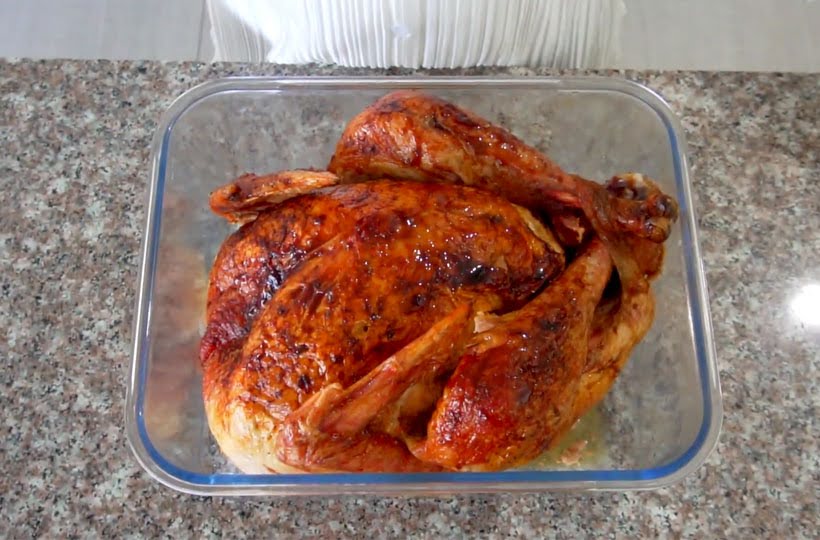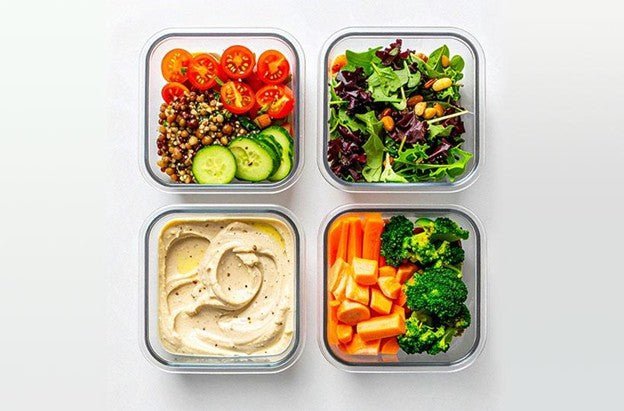Chopped vs Diced: Mastering Knife Skills with a Japanese Chef Knife from Razab

Have you ever stared at a recipe filled with instructions to "chop" or "dice" ingredients wondering what the difference actually is? Fear not aspiring chefs! This guide on chopped vs diced will tell you all the mysteries of chopping and dicing empowering you to tackle any recipe with confidence. Along the way we will explore how a high-quality Japanese chef knife from Razab can change the entire concept of your cooking-related adventure.
The Importance of Knife Skills

Mastering knife skills is the foundation of great cooking. Precise cuts ensure even cooking enhances textures and create visually appealing dishes. Imagine perfectly diced vegetables that cook uniformly in a stir fry or a finely chopped onion that releases its flavor evenly in your soup. A sharp, well-balanced Japanese chef knife from Razab empowers you to achieve these results with ease.
Before digging deeper, let us first understand chopping and dicing:
Chopping Knife
-
Definition: Chopping involves breaking down ingredients into roughly similar-sized chunks with some variation in shape.
-
Characteristics: Chopped pieces are typically larger than diced pieces and offer a more rustic texture to dishes. They cook at a slower rate compared to diced ingredients.
-
Techniques:
-
Rock chop: A rocking motion with the knife while holding the ingredient steady with your other hand.
-
Pushcut chop: Pressing the knife down with a controlled motion while moving it forward.
-
The "claw" grip: Curling your nondominant hand fingers to form a clawlike shape to hold the ingredient securely while chopping.
-
Rock chop: A rocking motion with the knife while holding the ingredient steady with your other hand.
-
Tools:
- A chef's knife is ideal due to its size and weight for handling most chopping tasks.
- A cleaver can be useful for chopping through tougher vegetables or bones.
- A chef's knife is ideal due to its size and weight for handling most chopping tasks.

- Commonly Chopped Foods:
- Onions (for soups, stews)
- Bell peppers (for stir-fries)
- Celery (for mirepoix)
- Fruits for salads
- Herbs (for a rougher texture)
- Nuts (for toppings)

Dicing Knife
-
Definition: Dicing involves cutting ingredients into uniform cubes of a specific size.
-
Characteristics: Diced pieces offer a consistent texture and cook more evenly due to their similar size.
- Techniques:
- Similar to chopping techniques but with more emphasis on controlled cuts for consistent size.
- Often involves a two-step process: first slicing the ingredient into slabs, then turning those slabs and dicing them further.
- Tools:
- A chef's knife is the primary tool for dicing.
- A mandoline slicer can be helpful for achieving perfectly uniform cubes with some vegetables.

- Commonly Diced Foods:
- Tomatoes (for salads, salsas)
- Carrots (for soups, stews)
- Potatoes (for stews, hash browns)
- Cucumbers (for salads)
- Cheese (for salads, sauces)
- Shallots (for sauces)
The Difference Between Chop, Dice, and Mince
Before diving into chops and dices let us explore a quick breakdown of these essential knife cuts:
-
Dice: Dicing involves cutting ingredients into uniform cubes. The size of the dice can vary depending on the recipe – a small dice for salsas, a medium dice for stews, and a large dice for chunky soups.
-
Chop: Chopping creates chunks of roughly similar size but not necessarily perfect uniformity in shape. This technique is ideal for ingredients like vegetables for soups, stews, or stir-fries.
- Mince: Mincing is the finest chop, creating tiny pieces perfect for garlic, herbs, or softening ingredients like onions for sauces.

The Duel Between Chopped vs Diced Items
Dice vs. Cube: A Quick Bite
While "dice" are often called cubes, there is a subtle difference. A cube is a geometric shape with six identical square faces. Dice, however, are typically used for games and have pips (dots or numbers) on their faces.
Chopping:
-
Grip it right: Use a claw grip with your nondominant hand to hold the ingredients securely.
-
Choose your weapon: A chef's knife is your best friend for chopping.
- Rock or push? Master the rock chop for a rocking motion or the push cut for controlled downward cuts.

Dicing Done Right:
-
Slice it thin: Start by slicing the ingredient into slabs for better control.
-
Cube creation: Rotate the slabs and make controlled cuts to achieve uniform cubes.
- Sharpness is key: A sharp chef's knife ensures clean and even cuts when dicing.
The Art of Chopping (and Why Your Razab Chef Knife Makes a Difference)
There are different chop sizes, each with its own purpose:
-
Large Chop: Perfect for chunky salads, stir-fries, or rustic dishes. A Razab chef knife's long blade effortlessly glides through larger vegetables, ensuring clean cuts and minimal bruising.
- Medium Chop: Ideal for most vegetables in soups, stews, and stir-fries. The sharp edge of your Razab knife allows for precise cuts that cook evenly.

Dicing: Precision Made Easy with Your Razab Chef Knife
Dicing requires more control, and a Razab chef knife is your perfect partner:
- Dice (Small Chop): This size is ideal for salsas, piccolos, and garnishes. The nimble design of a Razab knife allows for controlled cuts, ensuring uniform cubes for a beautiful presentation.
When to Chop or Dice: Mastering the Cut for Perfect Results
Chopping and dicing are fundamental knife skills, but knowing which to use can elevate your cooking. Here's a breakdown to help you decide:

Chop When:
-
Size Matters: You want larger chunky pieces. Chopped vegetables add a satisfying bite to stews, soups, and stir-fries.
-
Texture Reigns Supreme: Chopping preserves the natural texture of ingredients. Chopped herbs offer a more rustic touch compared to finely minced ones.
-
Slow and Steady Wins the Race: You are dealing with ingredients that cook slowly. Chopped carrots will hold their shape in a stew, while diced ones might overcook.
- Embrace the Rustic: You prefer a more casual homemade look for your dish. Chopped onions in a casserole add a homey feel.
Dice When:
-
Even Cooking is King: You want uniform pieces to ensure even cooking throughout the dish. Diced vegetables in a stir-fry cook quickly and evenly.
-
Flavor Dispersion is Key: You want ingredients to release their flavor evenly. Diced onions in a sauce distribute their flavor throughout.
-
Presentation Matters: You are aiming for a more refined look. Diced tomatoes create a visually appealing salsa.
- Fast and Furious Cooking: You are working with ingredients that cook quickly. Diced potatoes cook faster in a soup compared to chopped ones.

Remember:
Always prioritize the recipe's instructions. They often specify chop or dice based on the desired outcome. Consider how you are cooking. Chopping might be better for slow braising while dicing suits quick stir-frying. In the end, your preference matters! Do you like a chunky stew or a smoother soup? Choose chop or dice accordingly.
Some witty tips and tricks
Sharper Skills, Tastier Results: Mastering the Chop and Dice
Now that you understand when to chop and dice, let's elevate your technique! Here are some tips to become a chopping and dicing pro:
-
Sharpen Up: A dull knife is a safety hazard and makes clean cuts difficult. Invest in a good quality whetstone or honing steel and learn proper sharpening techniques.
-
Practice Makes Perfect: Don't be afraid to experiment! Start with softer ingredients like onions or peppers and gradually progress to tougher ones.
-
The Power of Prep: Wash and dry your ingredients before chopping. A damp cutting board can make it slippery, increasing the risk of accidents.
-
Uniformity is Key: For dicing, consistency is crucial. Use a two-step process: first slice the ingredient into slabs of similar thickness, then rotate and dice the slabs for uniform cubes.
- Mind Your Fingers: Keep your nondominant hand fingers curled inwards (claw grip) to hold ingredients securely and avoid nicks.

Knife Safety: Chopping with Confidence
Using a sharp knife is not only more efficient but also safer. Here are some safety precautions to remember:
-
Know Your Grip: Hold the knife handle firmly with your dominant hand using a pinch grip (thumb and index finger).
-
Point Away: Always point the knife tip down or away from yourself and others when not in use.
-
Clear the Zone: Keep your workspace clear of distractions and clutter to avoid accidental cuts.
-
Don't Chase the Food: If an ingredient slips, let it go and reposition it rather than reaching for it with the knife in hand.
- Walk the Walk: When carrying a knife, keep the blade pointed down and walk with a clear path, ensuring no one is in your way.
Sharpen Your Skills, Spice Up Your Kitchen!

There you have it. All you need to know and explore about the world of chopping and dicing is time to grab your knife and get started! Remember, practice makes perfect. Do not be afraid to experiment with different ingredients and techniques. With a little practice, you will be a master of the chop and dice, ready to create restaurant-worthy dishes in the comfort of your own kitchen!






Leave a comment